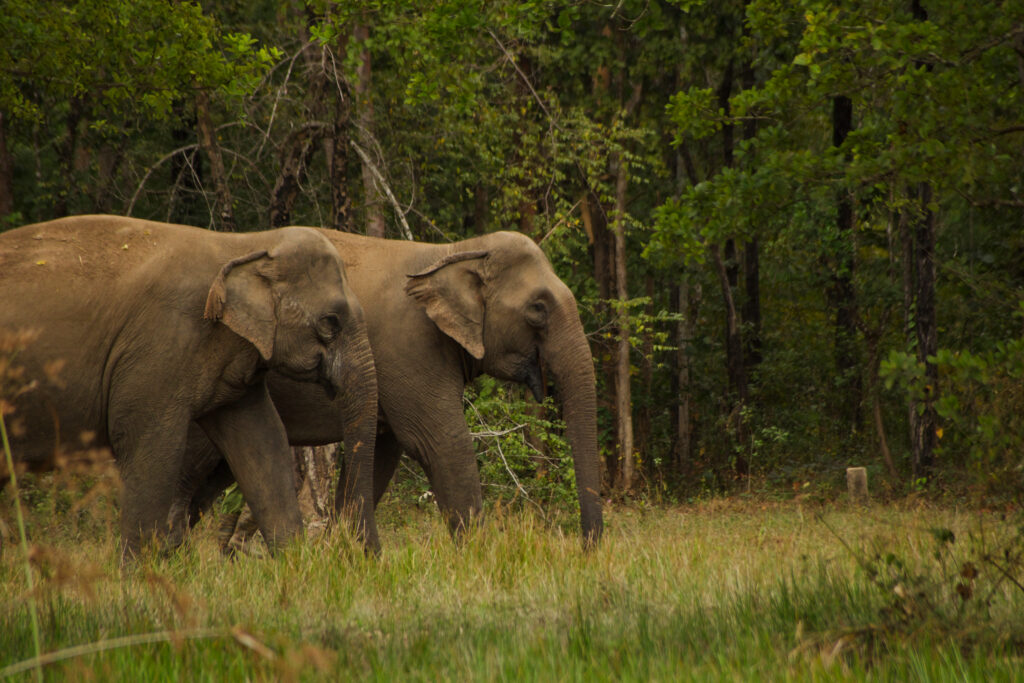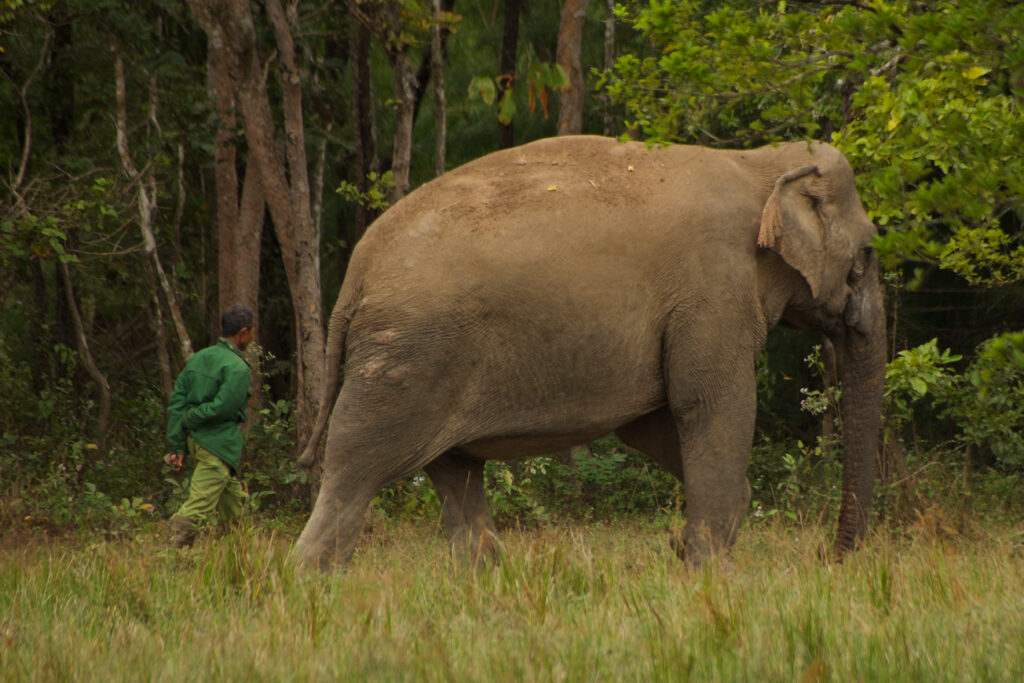
Vietnam has seen the widespread killing of wild animals, especially during the years of the devastating Vietnam War, when wildlife populations experienced a steep decline. Many of Vietnam’s large mammals are extinct or critically-endangered, leaving little for a young wildlife-loving journalist like me to see. It was once home to the Javan rhino, the last of which was killed by poachers in Cat Tien National Park in 2010. Tigers are effectively extinct in the wild, wild bear populations are dwindling, as are leopards and elephants.
The decline can be attributed to the rampant deforestation that restricts the animal population to small pockets of wilderness across the country. This separates the remaining population, consequently reducing genetic diversity and making it harder for individuals to find mates. One thing I’ve learned from my time as a conservationist is that nature is a very delicately balanced, fragile system where everything is connected. Removing one element will cause the entire system to come crashing down like dominos.
This contraction in the wild animal population is further encouraged by the rising demand for products such as tiger bones, bear bile, pangolin scales, rhino horn, and elephant tusks to be used in traditional medicine. This may be the final nail in the coffin for the final members. An article by the New York Times reports on the silent, empty national parks devoid of the rich wildlife it once contained. According to the ENV, as of January 1st, 2020, 302 tigers are recorded in captivity in Vietnam of which 248 are in privately owned farms and zoos.
After dedicated hours to find some wildlife in Vietnam, I stumbled upon an off-road destination called Dak Lak where the last surviving elephants of Vietnam were reported to reside. Where there is a will, there is a way. It was a very difficult task to find any other information on the matter other than that an animal welfare organization called Animals Asia had started an initiative to stop elephant riding and create ethical elephant tourism experiences. I also found that Animals Asia had an elephant conservation center where they appeared to have a few elephants.
Information was extremely scarce and outdated. I sought out people who had been to the center and learned that the only people who had gone there were from animal welfare NGO’s for a short-term study program, thus ending my quest to visit the center. I, however, was still not going to take no for an answer. I dragged my family all the way over to rural Dak Lak, in hopes of seeing the elephants. What we saw was horrible.

I had read that Animals Asia had created an initiative to end exploiting elephants for tourism but we saw so many elephants still being used for rides. I had not realized how much more work there was to be done. It was truly sad to see. Wherever we went in Dak Lak, we saw elephants kept in small enclosures bound to a tree with only a chain (as pictured in the image above). The elephant was so big and strong. It could easily have ripped off the chain with minimal effort. When it was young, it was captured and separated from its mother, be it captive or wild. The mahouts then proceeded to tame the elephant using the whip. At that age, the elephant was tied with that small chain, the same chain used to restrain him today. The elephant would have tried and tried to escape from that chain but at that age, it was simply too difficult. Over time the elephant just gave up. It grew bigger and stronger, strong enough to cast off his chains and escape but the trauma he had suffered in his childhood- being separated from his mother, tied up with a chain as long as your arm, suffering blow after blow from the whip, it had broken his heart and shattered all his hopes and dreams. He wouldn’t even try to resist anymore. He just obeyed every instruction his master gave him, living a life devoid of any purpose. He was born to be exploited until the day he died and another would take his place. It was heartbreaking. Two hours away, something much more encouraging was happening.
In Yok Don National Park, we set out on a walk with our guide to find the elephants. Yok Don National Park is on the border with Cambodia where the elephants can move across the border. The park was there only for one purpose: for the elephants. We occasionally heard the cry of a bird or a water buffalo chewing leaves but nothing else. The forest seemed empty. We walked and walked and I was tired. I had hoped to see the wild elephants, some proof that the work that was taking place here was actually having an impact. But instead what I had found was 20-60 captive elephants either being kept at home or being exploited for tourism. Could this all just have been rumors?
But then our guide pointed about a hundred meters ahead, where we spotted two female elephants. My heart nearly jumped out of my chest. I picked up my camera and began firing away, shot after shot. We watched them feed and then disappear into the forest. With our guide, we proceeded to follow them. We heard them long before we saw them in the dense bush. Munching loudly, they weren’t too difficult to locate.

These elephants weren’t completely wild however. They were part of the Animals Asia program to release once captive elephants back into the wild. The pure wild elephants had not come to recognize the captive elephants as one of their own and would attack them so the mahouts that had once cracked the whip on the same elephants now protected them in their natural habitat, both from the elephants and also from poachers.
We followed them for a while before the mahout motioned to me to follow him. By his side, we approached the elephants until we were no less than ten meters away from these huge creatures. I had seen elephants before, both in the wild in Africa and in captivity in Asia but never had I seen the rare wild elephants of Vietnam. The elephants, completely oblivious as to what we were doing, carried on munching away. They inched forward, chomping on whatever they could reach. Within no time, the mahout and I were no more than an arms reach away. The Asian elephant was significantly smaller than the African variation but that took nothing away from its huge size, towering over me.
This was what we had hoped to see. A success story. The names of the elephants were Bun Kham and Y Khun, who are often spotted roaming together. The mahouts were the same person that had ridden the elephant before and now had switched professions. The mahout had spent 25 years with the elephant. This job had its advantages because they knew they were doing something good and financially because they received a monthly salary that was higher than what they attained in their old job. The mahouts stay with the elephants all day, go home at night, and return the next day. Releasing the elephants into their natural habitat has already shown to have positive effects. The elephants no longer pace, their eyes have cleared up, and their skin shows no bruises. These elephants are very healthy but the 20+ captive elephants need your help. They are destined for the wild and deserve to be free. Help Animals Asia end animal suffering. DONATE NOW!!
